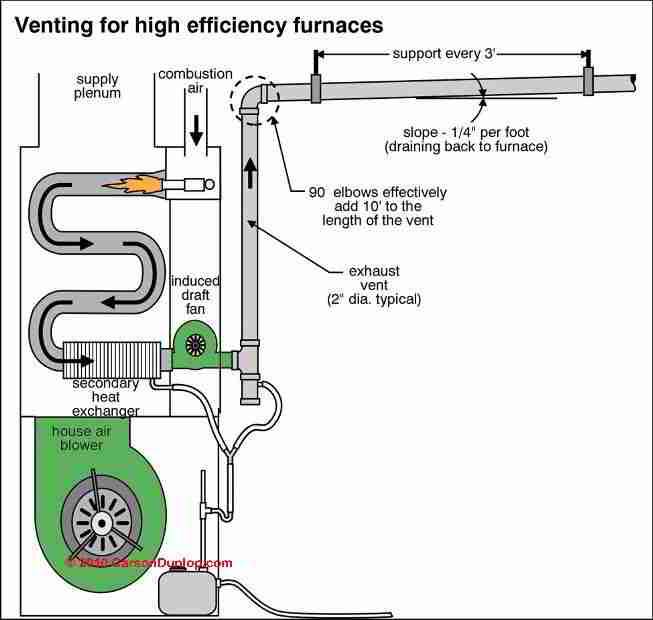A standard efficiency furnace provides 80 annual fuel utilization efficiency afue.
High efficiency furnace exhaust temperature.
A high efficiency condensing furnace can achieve efficiency ratings of 90 or above.
This usually equates to a median pipe material temperature value of 86 to 100 degree f.
Such furnaces cost more to run since they fail to capitalize on a significant amount of energy.
These days 95 afue is a common rating among new gas powered furnaces.
A high efficiency furnace uses a different type of venting system because it extracts the heat that remains in those combustion gases before venting the resultant mixture of water and carbon dioxide.
When this temperature starts to exceed 130 degree f it is usually an indication that there is a problem.
Venting for high efficiency gas furnaces materials.
The high temperature of flue gases is a major concern to me due to the fact that schedule 40 pvc pipe and fittings are only rated for 140 degrees fahrenheit.
It uses a venting system to extract that heat before venting.
In this type of furnace 20 of the energy produced by natural gas is expelled as exhaust.
As a result natural draft furnaces struggle to reach efficiency levels above 70 percent.
A conventional furnace vents these combustion gases through a vertical exhaust system that is attached to the furnace.
Conventional low efficiency furnaces have exhaust temperatures commonly in the many hundreds of degrees and conditioned air exit temps at the up to 250 300 degree range at times whereas high efficiency furnaces extract more of the heat from the combustion so the exit temperature is much lower to the point that in very high efficiency furnaces the exiting combustion gases and conditioned air may both be around 100 150 degrees.
In a great majority of cases plastic piping is used to vent high efficiency equipment.
High efficiency furnaces offer 90 or more afue.
Even when designed correctly a natural draft flue system has certain limitations in terms of drafting speed.
High efficiency or condensing furnaces exhaust the combustion gases and bring in fresh air through pvc pipes to the outside usually routed through the sidewall of the house.
Due to the condensing nature of a high efficiency furnace its venting must be made of a material that is resistant to corrosion.
A higher efficiency furnace with 90 to 98 efficiency is significantly more efficient than an 80 efficiency furnace and should produce slightly cooler exhaust.
Differences between 80 and 95 furnaces.
To make it simple the typical combustion gas temperature for a 90 efficient furnace should be in the 100 to 130 degree f range.
What is vented is a residual corrosive condensate of water and carbon dioxide.
High efficiency furnaces use draft inducers.
It is classified as type bh venting.
These highly efficient furnaces have a heat exchanger and a condensing chamber that help maintain a considerably low temperature on the pipes.

